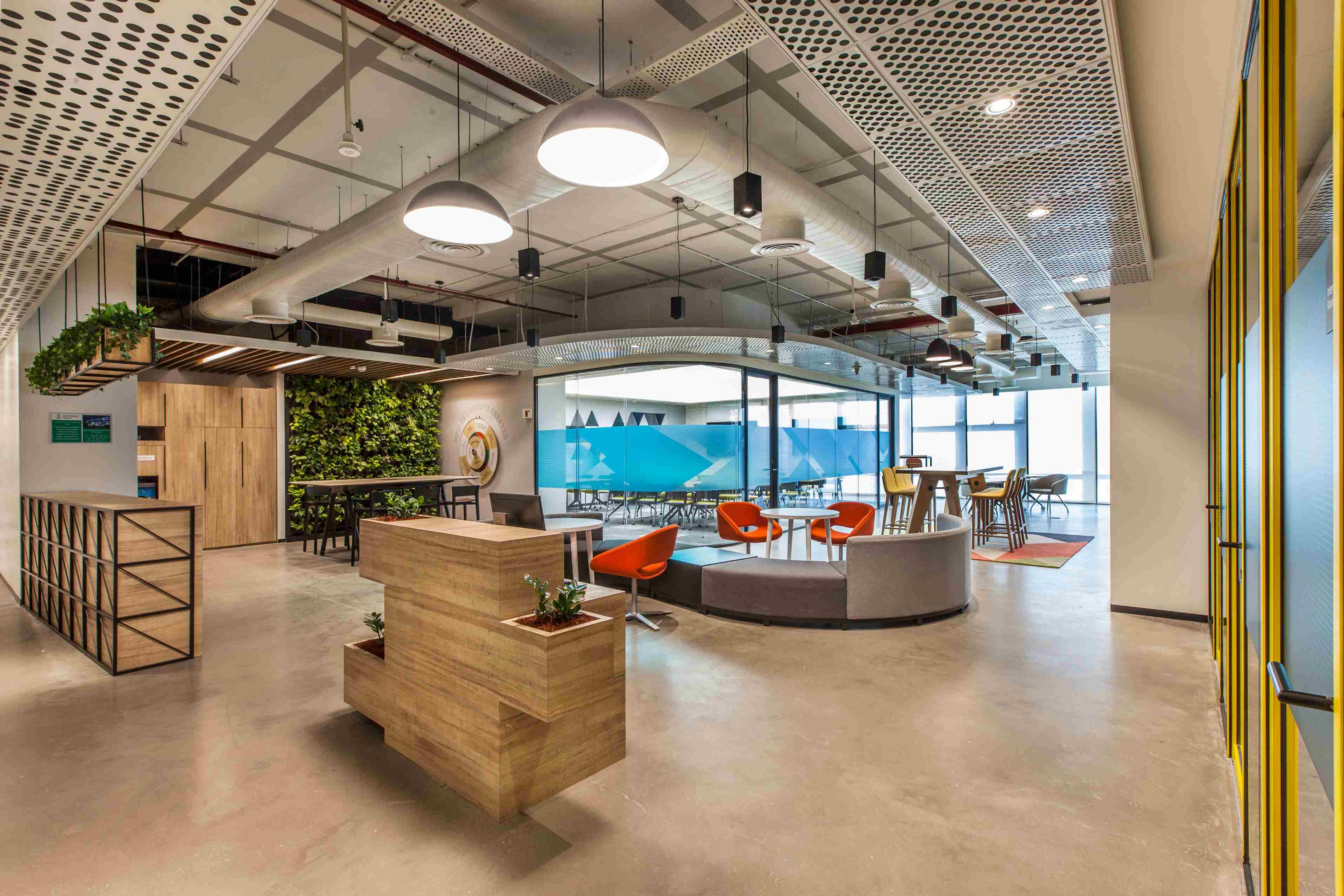5 ways Millennials are reshaping office design
Traditional office design is rapidly taking a backseat to allow for more modern and innovative workspaces. What is driving this change? A new research report by Space Matrix reveals how rising numbers of Millennials in the workplace is contributing to the evolution of office design.
According to the report, Millennials now constitute over 50% of the world’s population. This figure is also increasingly being reflected in the proportion of employees in the workplace. Despite common misconceptions, millennials actually work harder than any other generation, with 73% working more than 40 hours a week.
As the demographic of the workplace shifts, so do mindsets and working styles. Older generations tend to prefer individually focused work, personal space (cubicles), moderate tech support and structured process. Millennials, on the other hand, prefer collaboration and teamwork, flexibility and greater use of technology.
To cater to the changing needs of employees, workplace design is also quickly evolving away from traditional models.
We take a look at five ways that Millennial working styles are changing office design:
1. Encouraging collaboration to ensure employee fulfilment
Previous generations have tended to adopt an individualistic perspective for work. Millennials, however, prefer a more team-based and collaborative approach. This is because work is no longer perceived as merely an obligation, but as something that should provide personal enrichment and fulfilment.
Therefore, the use of Unified Communication and Collaboration (UCC) technology enables real-time communication, sharing and collaboration not just between employees, but also between departments. Another way to allow for greater collaboration is an open plan concept.
Consulting firm Gerson Lehrman Group (GLG), for example, incorporated an open plan concept in their new Mumbai office. Workspaces with low height screens facilitate discussions and desks can be rearranged for small to large group discussions. Additionally, a stepped seating area allows for town hall style group discussions.
2. The importance of technology in the modern workplace
Technology plays a huge part in the workplace today as Millennials are particularly tech-savvy and adaptable to changing conditions. The Internet of Things (IoT) has revolutionised the way we use office space. Smart sensors, for example, provide data that can be used to refine office design in order to maximise productivity. In the case of LED lights in a meeting room, sensors allow energy to be used more efficiently, thus cutting costs for businesses.
Technology has also reduced the need for employees to stick to a single workstation. Therefore, agile working set-ups are becoming more popular. Some elements that could cater to such preferences include modular phone booths where employees can make phone calls in privacy, and tech pods that are equipped with the latest easy-to-set-up technologies.
3. Dynamic workplaces to cater to different needs
To suit the working style of Millennials, it is important to provide a range of logistically different workspaces. This allows employees to choose one that best suits their needs. Offering options such as hot-desking, open meeting rooms with whiteboards, or informal spaces where one can grab coffee or snacks, allows for greater collaboration, inspiration and mobility.
More companies are also setting aside space for activity areas such as gym/yoga centres and even gaming rooms. Conversely, to allow employees to relax, incorporating nature into the work setting goes a long way in creating a more tranquil ambience. Prudential’s Singapore office, for example, features a Zen-garden. Essentially, if staff enjoy spending time in the office, they will be more productive and innovative.
4. “In-between spaces” that allow for flexibility
With up to 10-20% of employees in many companies now working from home, flexible workspace design has become a necessity. Having fixed spaces such formal meeting rooms is not cost efficient if they are not utilised often. Instead, having a range of rooms would allow companies to fully maximise their available space. These rooms can range from one-man phone booths to loud rooms for informal collaborative work.
Retractable walls, movable tables and extra electrical outlets are elements that can easily be incorporated by most companies into their office spaces. Some companies even offer beanbag lawns or private work pods to further mix things up. Coworking spaces are a good example of how multiple styles of working can be catered to in one space. These “in-between spaces” have no rigid purpose, but can adapt to multiple styles of working.
Sit-to-stand desks are also becoming increasingly popular. Workers using these desks are likely to remain 78% pain free, compared to those who use regular sit-down desks.
5. Casual spaces to promote greater interaction and innovation
Hot-desking sees employees sharing desks or using different desks each day. This allows companies to save space which can be used for other purposes. Additionally, new communication technology can be utilised to save operating costs. Sitting alongside different people on a regular basis also encourages greater workplace cohesion and improved relationships amongst colleagues.
Informal work areas are conducive for spontaneous brainstorms and allow workers to exercise the choice to work in settings that best suit their preferences. Weber Shandwick’s office in India, for example, includes a cafe where employees can play video games or unwind with an after-work drink. These casual spaces promote employee engagement and a sense of ownership.
Ultimately, modern workplace design seeks to provide an environment that allows staff to work in different settings within the same space. This may be the solution to ensuring productivity and employee wellbeing for the next generation.





